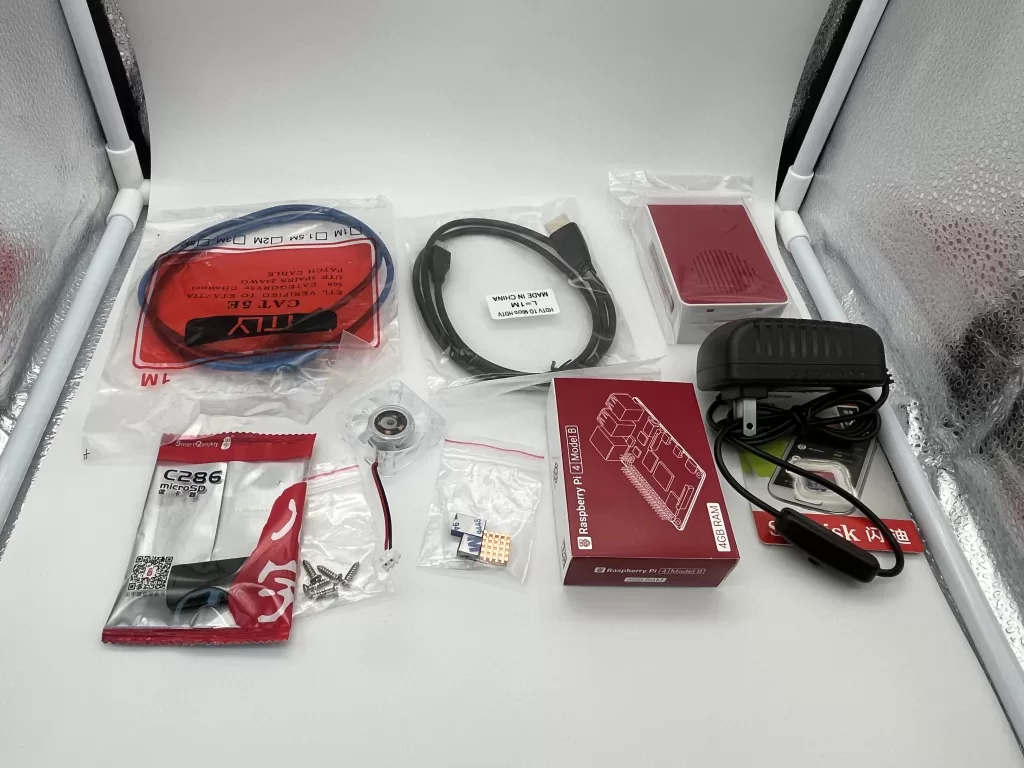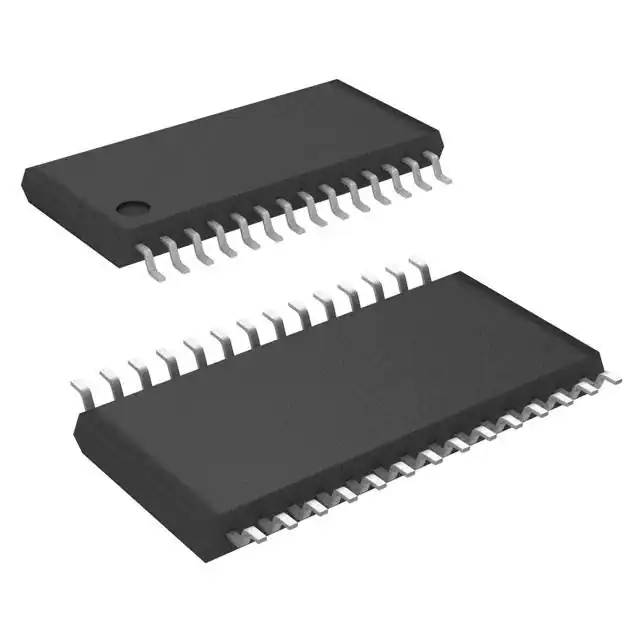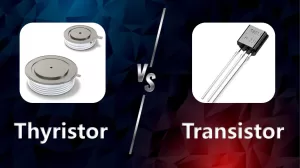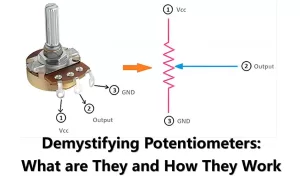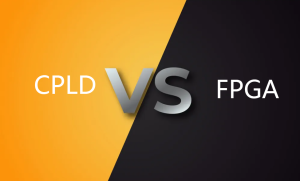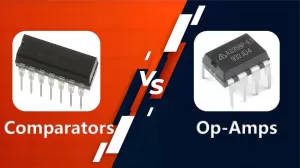When we explore the world of semiconductors, we come across two amazing devices: transistors and thyristors. These adaptable parts have completely ...
View detailsAll you Need to Know about Capacitive Reactance
Capacitive reactance is thoroughly explored in this article, which covers its definition, formula, and determining factors.The influence of frequency and capacitance on capacitive reactance is discussed in detail, highlighting their role in determining the magnitude of the reactance.
What is Capacitive Reactance?
Capacitive reactance is a property of capacitors that describes their opposition to the flow of alternating current (AC).
A dielectric material separates two conductive plates in an electronic component known as a capacitor. Upon application of voltage, charge accumulates on each plate, creating an electric field between them. When used in a direct current (DC) circuit, the capacitor reaches maximum voltage and acts as an open circuit, blocking current flow.
However, in an alternating current (AC) circuit, the capacitor behaves differently as the voltage alternates direction, causing the voltage across the plates to change polarity and resulting in a continuous alternation of charge on the plates, leading to current flow.
During this process, the capacitor continuously stores and releases charge, acting as a reactive element. Capacitive reactance is the measure of this opposition to the flow of AC current by a capacitor. The symbol "Xc" denotes it, and we measure it in ohms (Ω).
Capacitive Reactance Formula
The magnitude of capacitive reactance depends on the frequency (f) of the AC signal and the capacitance (C) of the capacitor. The formula for calculating capacitive reactance is:
Xc = 1 / (2πfC)
It should be noted that:
Xc is the capacitive reactance in ohms (Ω)
π is a mathematical constant (approximately 3.14159)
f is the frequency of the AC signal in hertz (Hz)
C is the capacitance of the capacitor in farads (F)
From the formula, we can observe that as the frequency increases, the capacitive reactance decreases. This means that at higher frequencies, the capacitor allows more current to flow through it. On the other hand, as the capacitance increases, the capacitive reactance also increases, resulting in greater opposition to the flow of current.
What Two Factors Determine the Capacitive Reactance of A Capacitor?
The capacitive reactance of a capacitor is determined by the AC signal’s frequency and capacitance of the capacitor.
Frequency
Capacitive reactance is inversely proportional to the frequency of the AC signal. As the frequency increases, the capacitive reactance decreases, allowing more current to flow through the capacitor. Conversely, as the frequency decreases, the capacitive reactance increases, restricting the flow of current. The following formula describes this relationship:
Xc = 1 / (2πfC)
Where Xc is the capacitive reactance, f is the frequency, and C is the capacitance.
Capacitance
Capacitive reactance is directly proportional to the capacitance of the capacitor. A higher capacitance value leads to a higher capacitive reactance, which restricts the flow of current through the capacitor. Conversely, a lower capacitance value results in a lower capacitive reactance, allowing more current to pass through. Generally, we measure the capacitance of a capacitor in farads (F) to represent its ability to store charge.
The capacitive reactance of a capacitor in an AC circuit can be adjusted by manipulating the frequency and capacitance. Understanding the relationship between frequency, capacitance, and capacitive reactance is crucial for analyzing and designing AC circuits with capacitors.
Capacitive Reactance vs. Inductive Reactance
Inductive reactance (Xl) is the opposition to the flow of alternating current through an inductor. The formula Xl = 2πfL determines the inductive reactance, with f representing the frequency and L representing the inductance. Here's a chart showcasing the differences between capacitive reactance and inductive reactance:

Capacitive Reactance vs Inductive Reactance
Capacitive Reactance vs. Impedance
Capacitive reactance and impedance are related concepts in AC circuits, but they represent different aspects of circuit behavior. Let's explore the differences between capacitive reactance and impedance:
Capacitive reactance, as we have discussed earlier, is the opposition to the flow of AC through a capacitor. It is determined by the formula Xc = 1 / (2πfC), where Xc represents capacitive reactance, f is the frequency of the AC signal, and C is the capacitance of the capacitor. Capacitive reactance is dependent on both the frequency and the capacitance value, with higher frequencies and larger capacitance leading to lower reactance values.
Impedance is the total opposition to the flow of current in an AC circuit, consisting of both resistive and reactive components. It is represented by the symbol Z and can be calculated using the formula Z = √(R^2 + (Xc - XL)^2), where R represents the resistance in the circuit, Xc denotes the capacitive reactance, and XL represents the inductive reactance if present. The magnitude of impedance is obtained by taking the square root of the sum of the squares of the resistive and reactive components.
Capacitive reactance and impedance differ in their mathematical representation, with capacitive reactance being a purely imaginary quantity and represented by a negative sign when calculating impedance due to the 90-degree phase difference between voltage and current in a capacitive circuit. This negative sign is squared and added to the positive resistance component, resulting in a positive impedance value.
In terms of their impact on a circuit, capacitive reactance and impedance exhibit distinct behaviors. Capacitive reactance creates opposition to current flow through the capacitor, which results in a phase shift where the current lags 90 degrees behind the voltage. This is a defining feature of capacitive circuits. Conversely, impedance considers not only the reactive impact of capacitive reactance but also the resistive impact of the circuit. It represents the combined resistance and reactance components that oppose current flow.
Having a clear understanding of the distinctions between capacitive reactance and impedance is crucial when it comes to designing and analyzing AC circuits in real-world scenarios. Capacitive reactance plays a key role in determining how capacitors behave within circuits, whereas impedance offers a more comprehensive perspective on the overall resistance to current flow. By taking into account both of these factors, engineers and technicians are able to accurately evaluate circuit behavior, enhance performance, and effectively address any problems that may arise in AC circuits.
To summarize, capacitive reactance and impedance are crucial concepts in AC circuits that have separate functions. Capacitive reactance signifies the resistance to current flow in a capacitor, whereas impedance covers both resistive and reactive elements. These two factors differ in their mathematical representation and their impact on circuit performance. Knowing their distinctions helps us comprehend the complex mechanisms of AC circuits and make knowledgeable choices when designing and evaluating electrical systems. Here I also briefly list a chart for reference:

Capacitive Reactance vs Impedance
Why Capacitive Reactance is Negative?
Capacitive reactance is not inherently negative. It is a positive value that represents the opposition to the flow of current through a capacitor in an AC circuit.
The relationship between voltage and current in a capacitive circuit can cause a negative sign in impedance calculations. Both resistive and reactive components determine impedance, which is the total opposition to current flow in an AC circuit.
In a capacitive circuit, the voltage across the capacitor leads the current flowing through it by 90 degrees. To find impedance (Z), use the formula Z = √(R^2 + Xc^2). The reactive part (Xc) is negative due to the 90-degree phase difference. This negative value, when squared and added to the positive resistance component (R^2), results in a positive impedance value.
So while capacitive reactance itself is positive, the negative sign arises from the phase relationship between voltage and current, affecting the calculation of impedance.
Conclusion
In this post, you will learn about its definition, formula, and the factors that affect it, which include frequency and capacitance. Additionally, we will compare the difference between capacitive reactance and inductive reactance as well as impedance, so as to help us to have a better understanding of capacitive reactance.
Becky
Becky is a technical writer who are interested in writing some professional and original articles. She spent some time working in some electronic sector, but her main area of interest is the use of AI in edge computing. The rest of the time, she write or program about technology-related articles pertaining to the Internet of Things, GPU computing, LoraWAN, PCB, Machine Learning, Precision Agriculture, Open Electronics, and similar areas.
WEW ALL POSTS BYBecky-
Thyristor vs Transistor: Unveiling the Differences and Best Uses 280
-
ESP32 vs Arduino vs Raspberry Pi Boards: Pros and Cons 375
In this blog, we'll delve into the features, capabilities, and potential applications of the ESP32, Arduino, and Raspberry Pi boards, comparing and...
View details -
How to Test a Transistor with a Multimeter: A Step-by-Step Guide 2334
Transistors are one of the most important components in modern electronics. They are utilized in a wide range of gadgets, including televisions, ra...
View details -
Demystifying Potentiometers: What are They and How They Work 370
Potentiometers, sometimes referred to as pots or potmeters, are frequently used as variable resistors in electronic circuits. They are crucial part...
View details -
FPGA vs. CPLD: Main differences between them 566
The operation of digital systems is aided by an integrated circuit known as a CPLD. Contrarily, an FPGA is an integrated circuit that is primarily ...
View details -
Comparators vs Op-Amps: What’s the Difference? 264
In this blog, we will delve into the key differences between comparators and op-amps, their applications, and the specific scenarios where each exc...
View details
 Ampheo Electronics
Ampheo Electronics